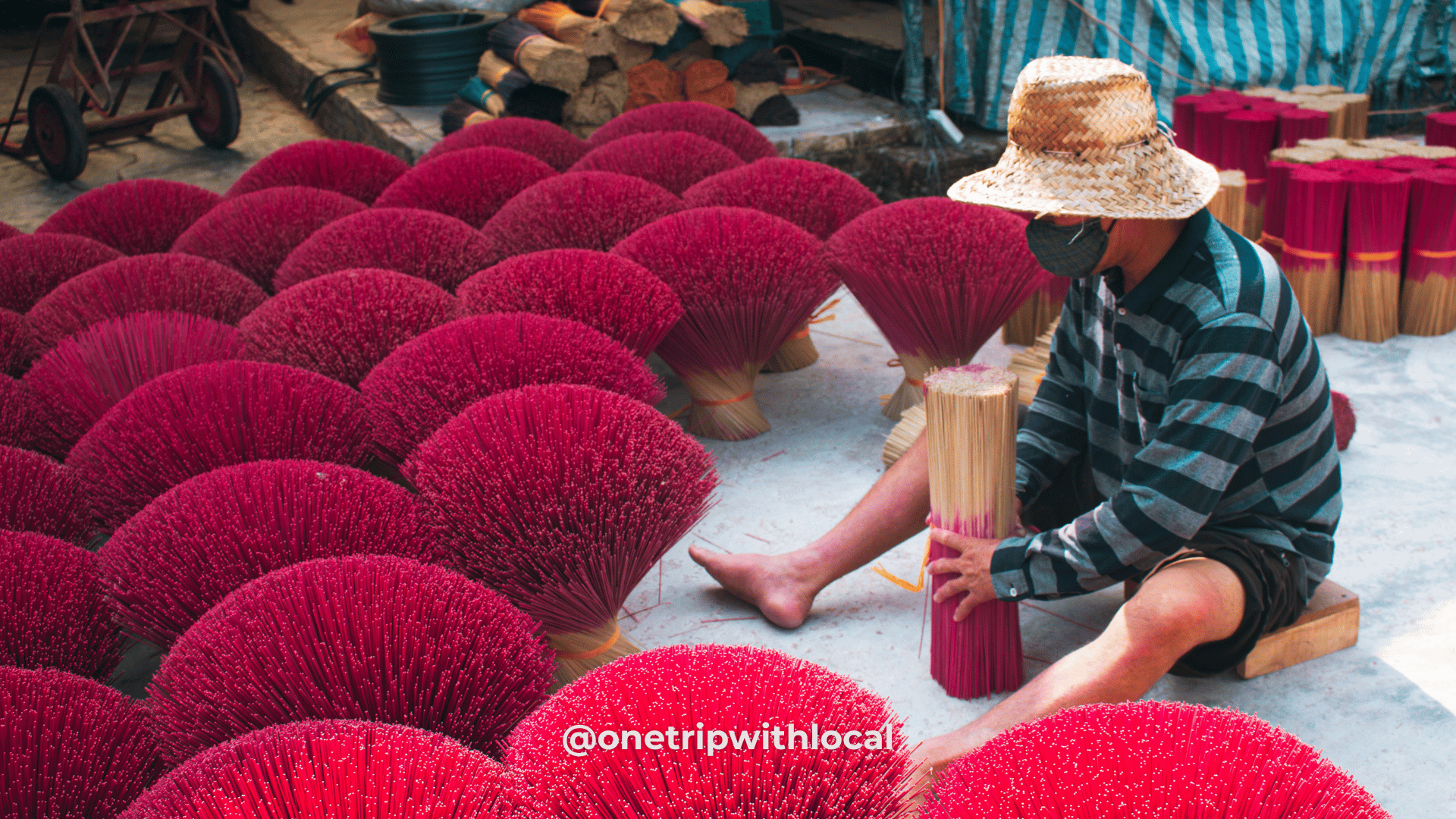Despite the rapidly increasing urbanization, especially in the capital, the Old Town of Hanoi tries to fight back and preserve its identity, that of a bustling old shopping district characterized by old houses reflecting the traditional architecture and construction techniques of Vietnam. Many conventional places with good preservation can be seen in Hanoi’s old quarter, including the old house located at 87 Ma Ma Street, the most famous and well worth a visit!


A story in the heart of Hanoi’s Old Quarter
This former house at 87 Ma Ma Street is located in the heart of Hanoi Old Quarter, commonly referred to as the 36 Guild District, the oldest shopping district in the Vietnamese capital.

The house was built in the late 19th century when Ma May Street was a bustling commercial street called “Black Pavillion Street” because the army of the Black Pavilions had come from China. As the dike was not yet built, Ma May Street was the center of the commercial activities of a very active river port at the intersection of the Tô Lich River and the Red River.
The surroundings of Hanoi are dotted with craft villages, which on the banks of the river, have come to sell their goods on the banks of the river in the capital.
The house of 87 Ma May did not deviate from the rule and was devoted to trade. Several generations of traders had inhabited the house, and until 1954 it was a shop selling medicinal herbs. Then, the Vietnamese government requisitioned the house to accommodate five families until 1999. They practiced his trade: grocer, civil servant, tailor, and even a martial arts teacher.

Finally, the house has been renovated in cooperation between Hanoi and Toulouse city of France. The three-story building had been built in the back. The internal subdivisions added over the years were demolished to restore the house to its original structure. The house was opened to the public on October 27, 1999. In 2004, it became a Vietnamese heritage property from the last century.
A singular and exceptional architecture
This old house is devoted to commercial activities and is a remarkable witness to traditional Vietnamese architecture in a senior bustling urban center in the late nineteenth century. It was built in tubular form, and Hanoian called it tube houses because they are just that: a long, narrow tube subdivided into sections to serve all the family’s needs, commerce, and residence. As soon as you enter the house, you will see significant gaps in the road, allowing you to trade.
Then, you can observe that the house consists of a series of three buildings arranged one behind the other and separated by courtyards that provide brightness and ventilation. The ground floor of the first two buildings is dedicated to trade and receiving guests in a beautifully decorated living room. On the second floor of these buildings, you can see the altar of ancestors, an essential piece in the Vietnamese culture considered the heart of the house.
There are also rooms and corridors where residents will grow plants and ornamental plants. Then in the backyard, you can see the kitchen where we used to cook over a wood fire. People appreciate the sophistication of the home, its tasteful décor, solid wooden furnishings, beautiful staircases impregnated with delectable luminosity, and sliding wooden doors that are intricately carved. The unique feature of its architecture is a harmonious combination of wood, tile roofs with a rigid beams system, and many decorative details.

A house dedicated to culture
In addition to being a great example of the typical architecture of Hanoi’s Old Town, Ma May’s home has become a cultural space. Many cultural events, art exhibitions, exhibits, and traditional Vietnamese handicrafts such as traditional paintings, lacquer, calligraphy or ceramics, and pottery are hosted here.

Every evening, at 19:00, the house’s terrace is transformed into a scene of ca trù, a traditional Vietnamese folk song inscribed in 2009 in the intangible heritage of humanity of UNESCO.
The facility is open daily from 8:30 AM to 5:00 PM. On weekends, it extends the opening hours to also include 7:30 PM to 10:00 PM.
Admission: 10,000 VND.
The Hanoi Old Quarter itself has plenty of remnants of the times you will learn about in this traditional house. Explore Hanoi on your own or on our Hanoi Old Quarter Walking Tour to learn even more about this fantastic city!

Read more: Must-Try foods & drinks in the Old Quarter
THE HANOI BUCKET LIST: THINGS TO DO In Paris of the East
Hanoi French Quarter – Top 10 Centenarian Works of French Architecture in Hanoi
Nearby, within a short walking distance, you will find Ta Hien Street. This vibrant street is known for its captivating architecture that beautifully combines elements of both French and Vietnamese styles. It is not only a popular destination during the day, but also the perfect spot to immerse yourself in the lively nightlife of the city. With an array of bars, restaurants, and entertainment options, Ta Hien Street offers a dynamic and exciting atmosphere that will surely leave a lasting impression on visitors.



